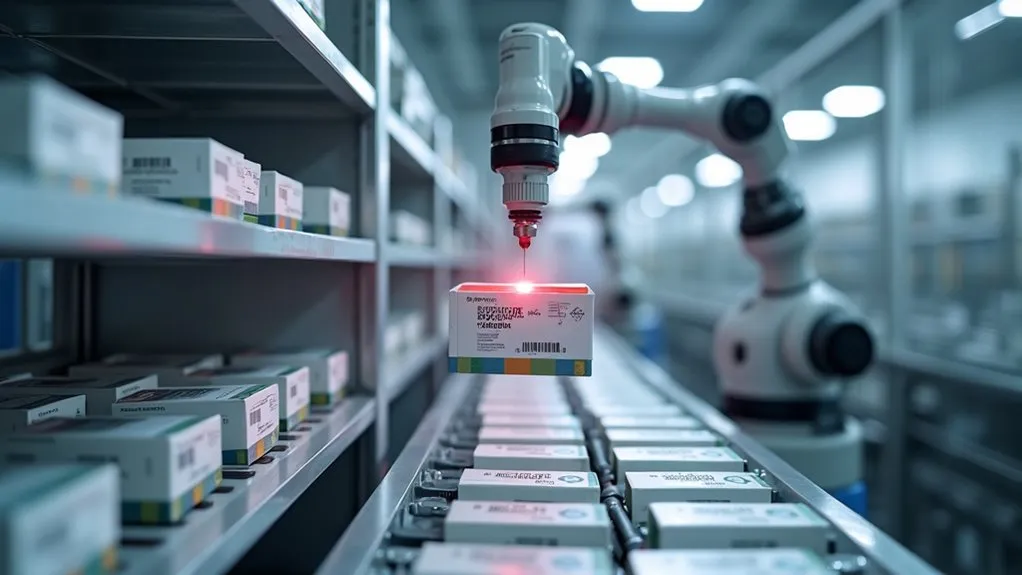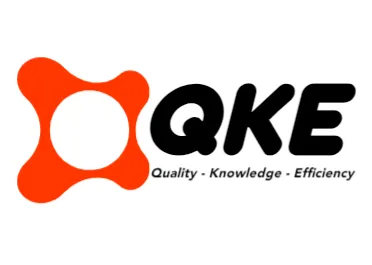A pharmaceutical track and trace system monitors the journey of drugs through the supply chain, from manufacturer to end-user, ensuring safety and authenticity. It uses unique identifiers, like 2D DataMatrix codes, to track products and combat counterfeits. Compliance with regulations, such as the US DSCSA and EU FMD, is mandatory, enforcing serialization and verification. This framework enhances patient safety and supply chain integrity. Exploring further will reveal deeper insights into its mechanisms and benefits.
Key Takeaways
- A pharmaceutical track and trace system monitors drug movement across the supply chain from manufacturer to end-user.
- It assigns unique identifiers to drugs for precise tracking and historical tracing.
- The system ensures drug safety by combating counterfeit medicines and verifying authenticity.
- It uses technologies like serialization and 2D codes to store data such as batch numbers.
- Compliance with regulations like US DSCSA and EU FMD is facilitated through traceability.
Understanding Pharmaceutical Track and Trace Systems

A pharmaceutical track and trace system is a sophisticated framework designed to monitor the movement of drug products across the entire supply chain, from manufacturing to the end-user. It assigns unique identifiers to individual packages, ensuring precise tracking of current locations and tracing of historical paths. This system upholds drug safety, authenticity, and integrity, safeguarding public health by combating counterfeit medicines. According to WHO estimates, a significant percentage of medications in low- and middle-income countries are counterfeit or substandard, highlighting the critical need for such systems (counterfeit medication prevalence).
The Evolution History of these systems reflects a response to rising counterfeiting threats and regulatory mandates like the US DSCSA and EU FMD, which enforce serialization and traceability. Initially rudimentary, these frameworks have advanced with global supply chain complexities. Looking at Future Trends, increasing regulatory adoption in markets like Asia and the Middle East signals broader implementation. These systems are pivotal for transparency, protecting patient safety, and meeting stringent compliance requirements across diverse regions, ensuring only genuine medications reach consumers.
Key Features and Technologies in Tracking Solutions

Delving into the intricacies of pharmaceutical track and trace systems reveals a suite of key features and technologies designed to ensure compliance with stringent regulatory standards. Central to these systems is serialization, which employs Code Generation to assign unique identifiers to drug packages, encoded in 2D DataMatrix or QR codes, embedding critical data like batch numbers and expiration dates. Aggregation establishes parent-child relationships across packaging levels, enhancing traceability through logistics.
Supporting hardware includes high-resolution printers and Vision Systems, such as machine vision cameras, which verify code presence and readability on production lines, ensuring accuracy for regulatory adherence. Robust software platforms manage serialization, data storage, and standardized reporting to authorities like the FDA or EMA. Secure databases and interoperable formats like EPCIS facilitate real-time verification. Together, these technologies uphold traceability, authentication, and compliance across the pharmaceutical supply chain, meeting global regulatory demands with precision and reliability.
Benefits of Implementing Traceability in Drug Supply Chains

Building on the foundation of key features and technologies in pharmaceutical tracking solutions, the focus now shifts to the significant advantages of implementing traceability within drug supply chains. Traceability enhances patient safety by reducing the risk of counterfeit drugs, enabling rapid recalls, and ensuring authenticity verification, while also safeguarding efficacy through storage condition monitoring. It bolsters supply chain security with end-to-end visibility and unique identifiers, preventing theft and diversion.
From a regulatory perspective, it facilitates compliance with stringent mandates like the DSCSA and FMD, providing verifiable data for audits and minimizing penalty risks. Operationally, it drives efficiency through improved inventory management and Cost Reductions by mitigating expenses tied to counterfeits and recalls. Additionally, real-time data supports Insight Generation, offering valuable information on distribution patterns and usage, which aids strategic decision-making and supports market assessments for optimized drug supply chain management.
Challenges in Adopting Track and Trace Mechanisms

How do pharmaceutical companies navigate the myriad obstacles in adopting track and trace mechanisms within their supply chains? The implementation of these systems presents significant Financial Burdens, with high initial costs for hardware, software, and production line modifications, alongside ongoing maintenance expenses. Small to medium-sized enterprises often struggle to allocate resources for such investments, compounded by potential production downtime during integration.
Beyond costs, Coordination Difficulties pose substantial hurdles. Aligning processes across diverse stakeholders—manufacturers, distributors, and retailers—requires extensive collaboration, often complicated by global supply chain complexities. Technical integration with existing IT infrastructure and ensuring interoperability among partners’ systems further challenge seamless data exchange. Additionally, comprehensive training is essential to overcome resistance and ensure proficiency. Data management and security also demand robust frameworks to handle vast serialization data while safeguarding against breaches. These multifaceted issues underscore the intricate barriers companies must address to achieve effective traceability.
Regulatory Frameworks Guiding Drug Tracking Practices
Navigating beyond the operational and financial hurdles of adopting track and trace systems, the pharmaceutical industry must align with stringent regulatory frameworks that govern drug tracking practices. Global Regulations, such as the US Drug Supply Chain Security Act (DSCSA) and the EU Falsified Medicines Directive (FMD), mandate serialization, traceability, and verification to ensure drug safety and combat counterfeits. The DSCSA requires unique identifiers and electronic data exchange for package-level tracing, with enforcement deadlines extended to 2024. Similarly, the EU FMD enforces safety features like unique identifiers and anti-tampering devices, supported by end-to-end verification via the European Medicines Verification System.
Enforcement Strategies vary, with governments worldwide updating mandates in countries like India and China, focusing on interoperability through GS1 standards. These regulations demand precise product identification, secure data exchange, and systematic reporting, ensuring supply chain integrity while adapting to evolving threats and technological advancements.

 Tiếng Việt
Tiếng Việt 日本語
日本語 中文 (中国)
中文 (中国) 한국어
한국어
